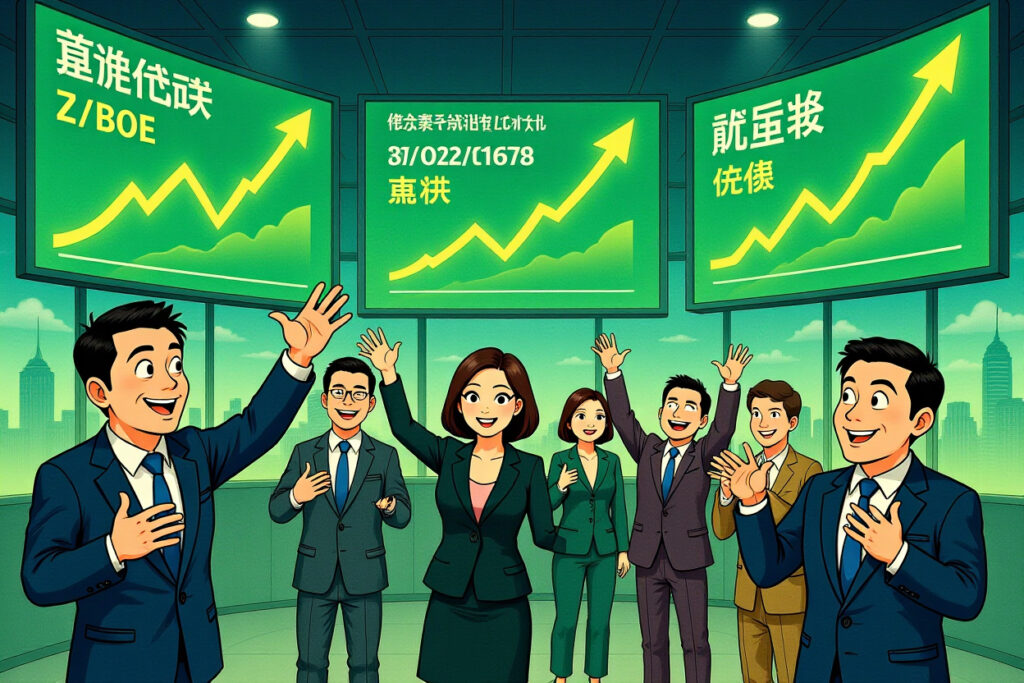Political Deadlock Threatens U.S. Government Operations
The specter of a U.S. government shutdown has emerged as a significant market risk event, with potential ripple effects across global financial markets including Chinese equities. President Donald Trump’s warning of a likely October shutdown comes amid unprecedented political polarization that could disrupt economic stability and investor confidence.
Senate Rejection Triggers Crisis Timeline
The Republican-proposed temporary funding bill failed in the Senate on September 19th with a 44-48 vote, falling short of the required 60-vote threshold. This development dramatically increases the probability of a U.S. government shutdown occurring within weeks. The existing funding mechanism only supports federal operations through month-end, creating an urgent two-week window for resolution.
Mechanics of a Potential Government Shutdown
A U.S. government shutdown would trigger immediate operational disruptions across federal agencies while maintaining essential services. Understanding the scope and limitations of such an event is crucial for investors assessing potential market impacts.
Operational Impact and Essential Services
– Hundreds of thousands of federal employees would face furloughs
– Non-essential government services would suspend operations
– Social security payments and mail delivery would continue uninterrupted
– Critical services including national security operations would maintain functionality
The current funding debate covers approximately one-quarter of the $7 trillion federal budget, excluding mandatory programs like Social Security and Medicare plus interest payments on the $37.5 trillion national debt.
Historical Context and Precedents
Government shutdowns have occurred with increasing frequency in recent decades, reflecting deepening political divisions. The most recent extended shutdown during Trump’s first term lasted 35 days—the longest in U.S. history—stemming from border wall funding disputes.
Comparative Analysis of Shutdown Scenarios
Analysts note several factors making the current situation particularly precarious compared to previous standoffs. The March 2023 near-shutdown saw Democratic leadership compromising under pressure, but current dynamics show both parties adopting harder-line positions. The expiring Affordable Care Act tax credits have emerged as a key bargaining chip in negotiations.
Market Implications and Global Repercussions
The potential U.S. government shutdown carries significant implications for international investors, particularly those exposed to Chinese equities and emerging markets. Historical patterns suggest specific market behaviors during shutdown periods that warrant attention.
Historical Market Performance During Shutdowns
– Equity markets typically show short-term volatility but limited long-term impact
– Treasury markets often experience flight-to-quality inflows
– Currency markets may see dollar weakness on political uncertainty
– Commodity markets frequently exhibit mixed performance depending on duration
For Chinese equity investors, the primary transmission mechanism would be through risk sentiment and global growth expectations rather than direct fundamental impacts. However, extended shutdowns could affect U.S. economic data quality and Federal Reserve decision-making processes.
Political Dynamics and Negotiation Timeline
The legislative calendar creates extraordinary pressure for resolution, with both chambers scheduled for recess periods that complicate negotiation timelines. The Senate plans to reconvene no earlier than September 29th, while the House isn’t scheduled to return until after October 1st.
Partisan Positions and Potential Compromises
Democratic leadership insists on healthcare spending increases that Republicans have rejected. Senate Majority Leader Mitch McConnell (R-KY) maintains that “only a few Democrats need to join Republicans to keep government open and funded.” Meanwhile, House Speaker Mike Johnson (R-LA) claims “the ball is in Senator Schumer’s court” regarding compromise decisions.
The Republican strategy involves bringing their proposal back for votes closer to the deadline, hoping Democratic members will switch positions to avoid being blamed for service disruptions. Democratic leadership counters that Republicans must also move from their initial positions.
Investment Strategy Considerations
Sophisticated investors should consider multiple scenarios when preparing for potential market impacts from a U.S. government shutdown. The event’s primarily psychological nature means prepared investors can identify opportunities amid volatility.
Portfolio Positioning Recommendations
– Increase cash positions for potential buying opportunities
– Review exposure to U.S. government contractors and suppliers
– Assess commodity holdings for supply chain disruption risks
– Evaluate currency hedging strategies for dollar volatility
Historical analysis suggests that market reactions to government shutdowns tend to be short-lived, with average S&P 500 declines of less than 3% during previous episodes. However, the current political environment may amplify typical market responses.
Forward Outlook and Resolution Scenarios
The path toward resolution remains unclear, with both parties demonstrating limited willingness to compromise. Several potential outcomes could emerge in the coming weeks, each carrying distinct market implications.
Potential Resolution Timelines
– Last-minute compromise avoiding shutdown entirely
– Brief shutdown lasting less than one week
– Extended shutdown exceeding two weeks
– Phased reopening of government services
Investors should monitor negotiation developments closely, particularly any signals from moderate members of either party who might broker compromises. The absence of scheduled votes until September 29th creates significant uncertainty about resolution timing.
Strategic Preparedness for Global Investors
The potential U.S. government shutdown represents another element in an increasingly complex risk environment for international investors. Chinese equity participants should maintain perspective about the event’s likely limited fundamental impact while preparing for potential volatility.
Historical patterns suggest that government shutdowns typically resolve without catastrophic market consequences, but the current political environment contains unusual elements. The combination of healthcare policy disputes, election year politics, and unprecedented partisan divisions could prolong negotiations beyond historical norms.
Sophisticated investors should use any market overreactions as potential opportunities while maintaining disciplined risk management protocols. The ultimate market impact will depend heavily on shutdown duration and subsequent political responses rather than the shutdown event itself.
Monitor negotiation developments daily through reliable news sources and prepare contingency plans for various duration scenarios. The coming weeks will test political will and market resilience simultaneously, creating both risks and opportunities for alert investors worldwide.




